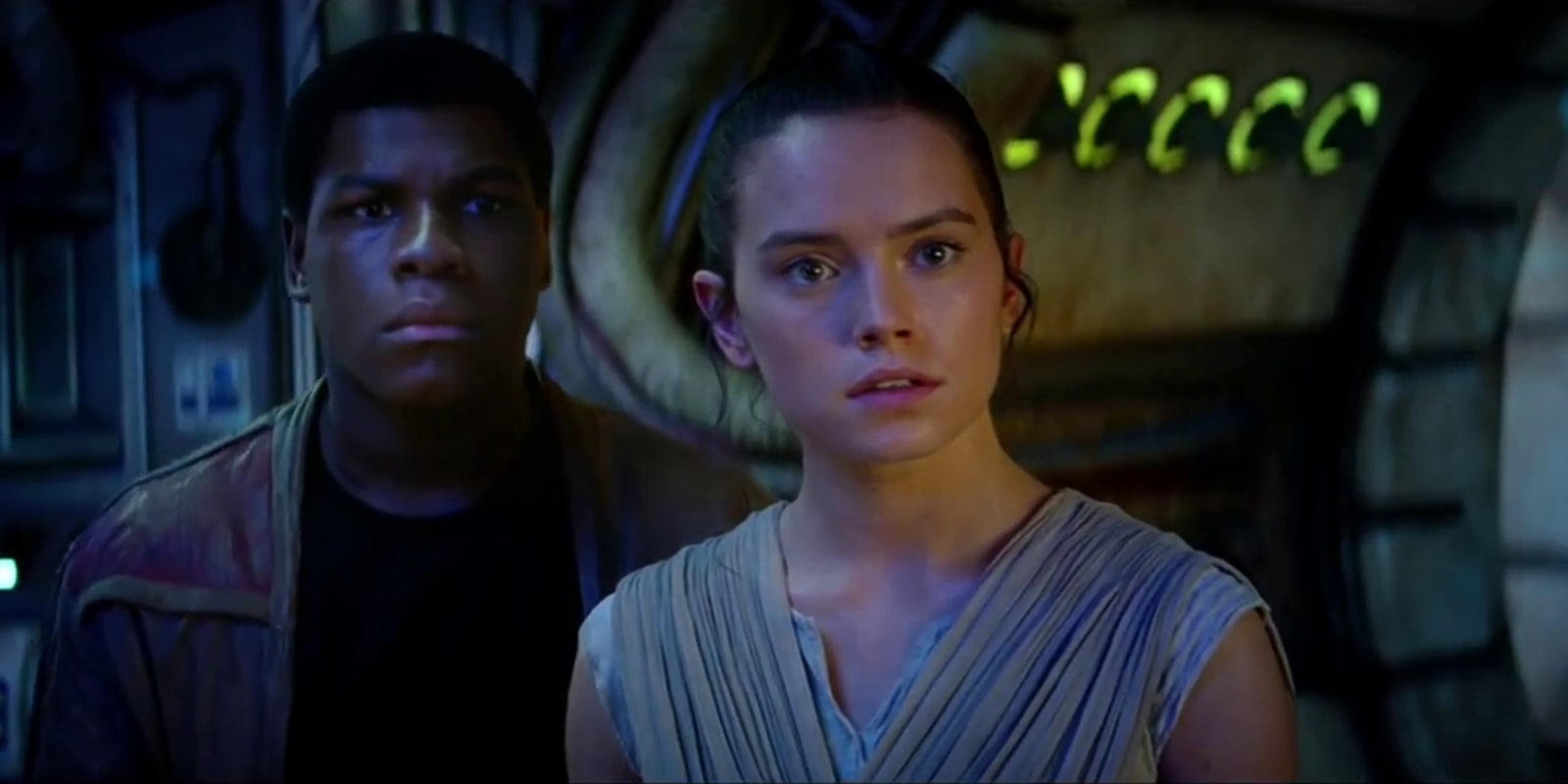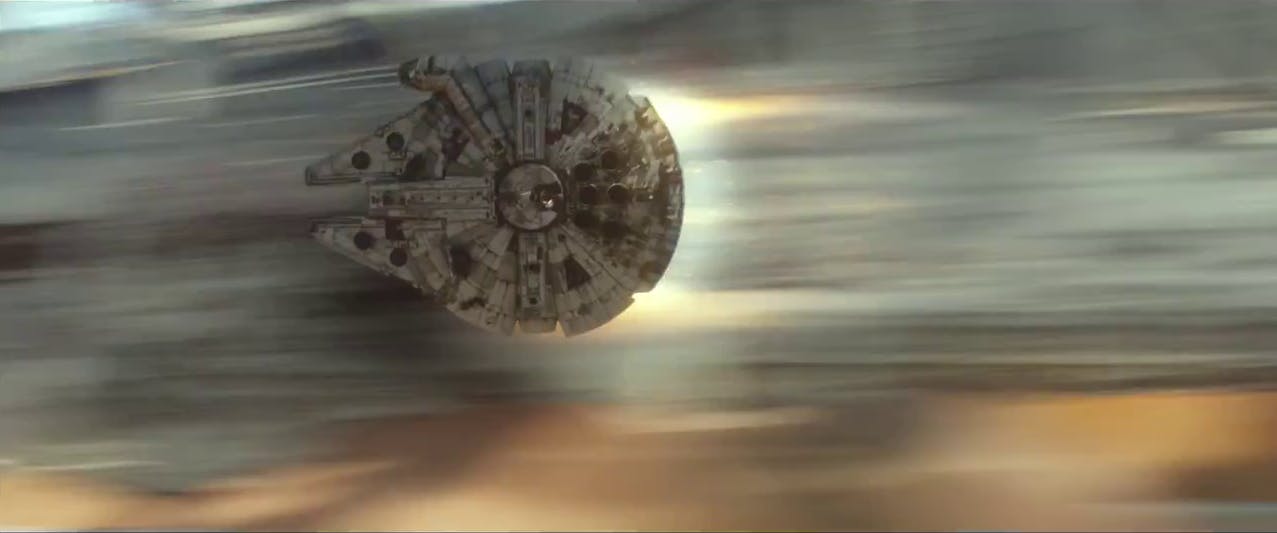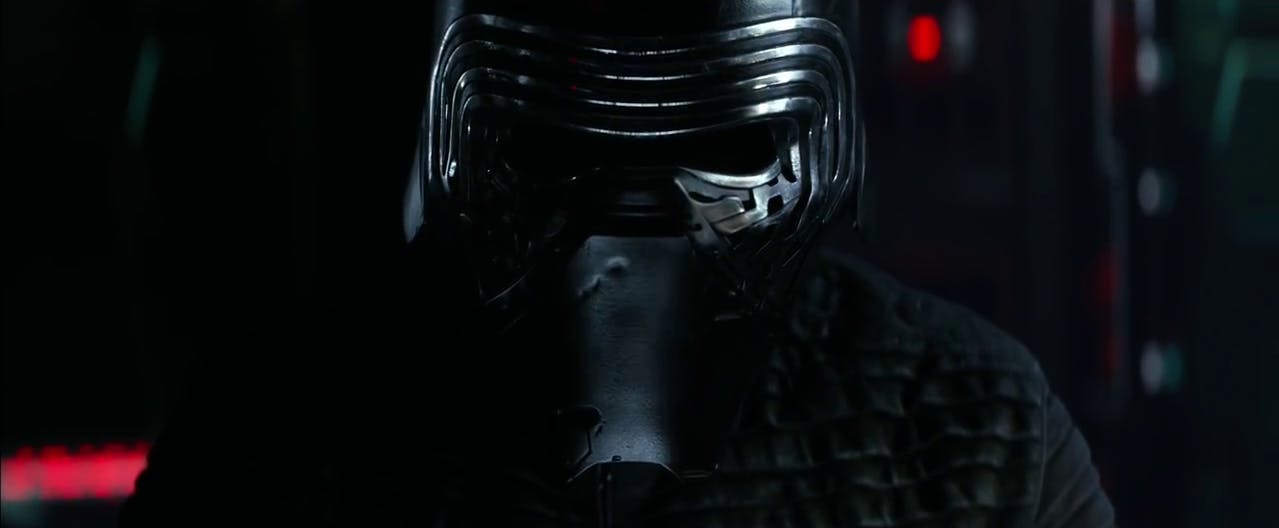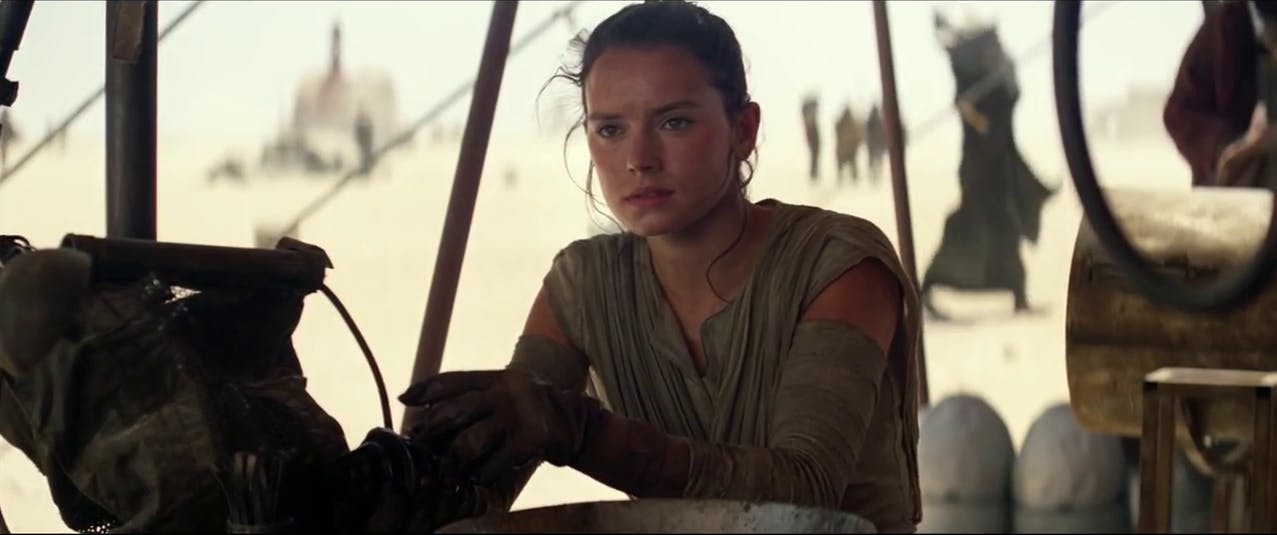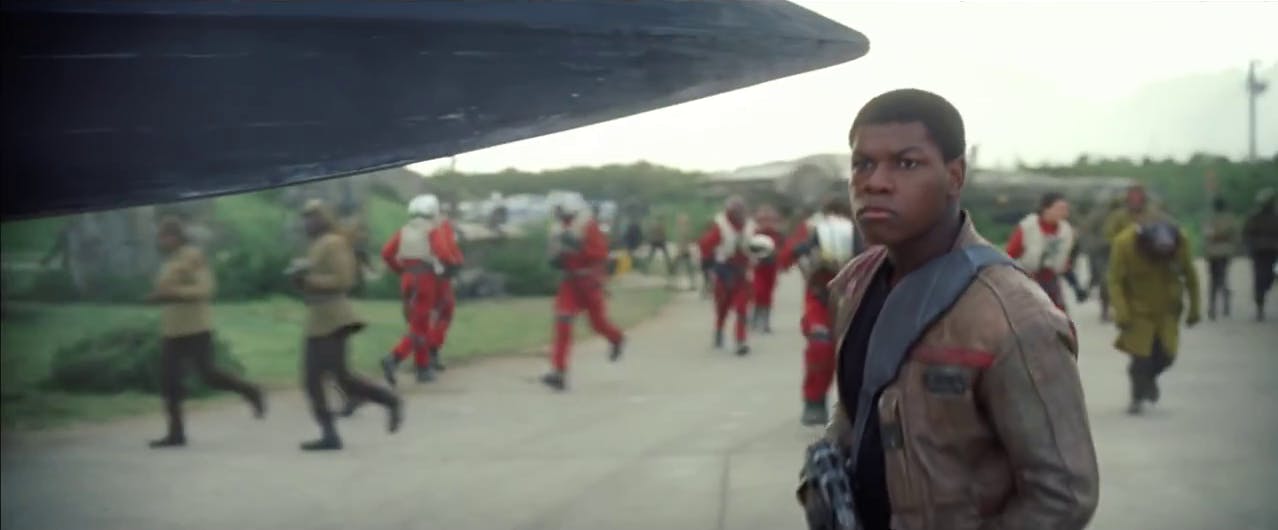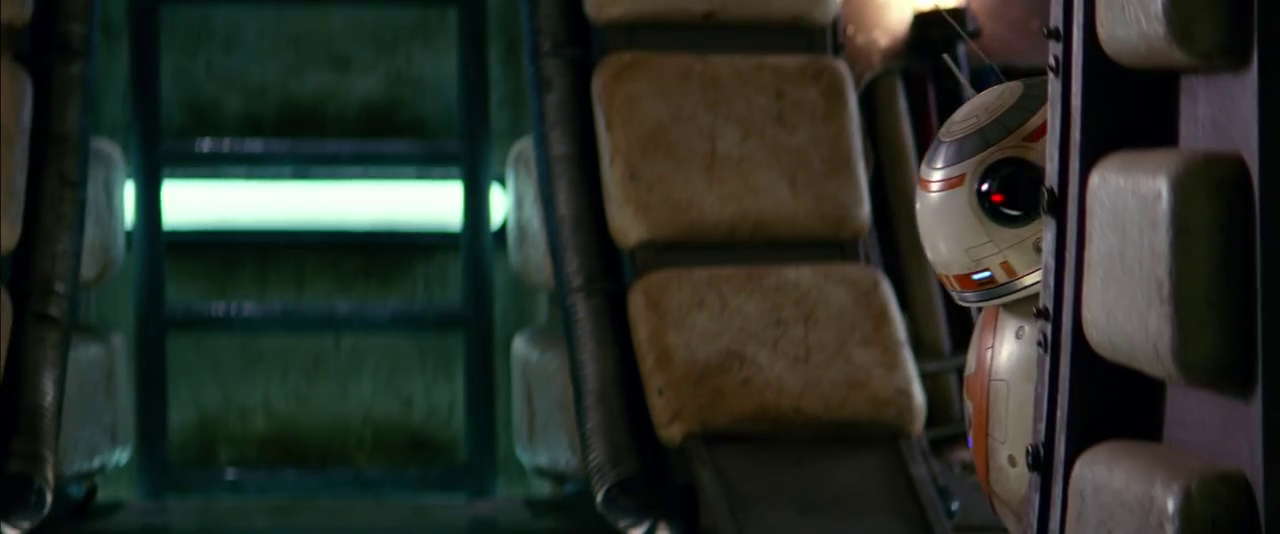Warning: This review contains possible minor spoilers (surface-level plot and character details) for The Force Awakens. It does not discuss major plot points or reveals.
There is a moment in Star Wars: The Force Awakens when Poe Dameron, the hotshot Resistance pilot played by Oscar Isaac, streaks through the sky with a squadron of X-wings and whoops with joy as the good guys come to the rescue at the last second. That is how it feels to watch The Force Awakens, the seventh film in the colossal Star Wars franchise, which hits theaters on Friday. It feels rapturous. It feels like a victory for Star Wars.
Director and co-writer J.J. Abrams, co-writer Lawrence Kasdan, and the cast and crew have delivered a film that is sure to please both hardcore fans and first-time visitors to the galaxy far, far away. Abrams and Kasdan have said that their primary goal in scripting the movie was to fill every scene with “delight.” In that respect, they succeeded tremendously. The film expertly blends the familiar with the unknown, activating nostalgia in one moment and piquing curiosity in the next.
The story of The Force Awakens, kept under wraps to a degree nearly unprecedented in the history of cinema, turns out to be a fairly direct copy of—one might say “homage to”—A New Hope, the movie that started it all in 1977. There is a loner on a desert planet who leaves on a mission bigger than she can ever imagine. There are reluctant heroes who think they know what they need to do and discover instead they have a different calling. There is a rescue mission to a villainous base that ends in tragedy. There is even a trench run in the film’s final minutes. You can probably guess how that trench run ends.
Despite these similarities, The Force Awakens didn’t feel anything like a copy. Quite the opposite. It felt fresh in a way few long-awaited sequels ever do. Instead of relying on the legacy characters to move the story, the film wisely leaves the heavy lifting to the newcomers. Han Solo (Harrison Ford), Chewbacca (Peter Mayhew), and General Leia (Carrie Fisher) are back. (Yes, so is someone else. We’ll get there.) So is C-3PO (Anthony Daniels). But Leia is mostly in the background, holed up in a command center. And Han and Chewie, while occupying a central role in the film, are companions on the journey rather than participants in it.
As anyone could have predicted from the film’s trailers but as no one can truly appreciate until they see the film itself, desert scavenger Rey (Daisy Ridley) and ex-stormtrooper Finn (John Boyega) dominate the film in terms of both screen time and emotional impact. Both characters are introduced quickly but efficiently; Kasdan famously told Abrams to trust the audience and not over-explain, and the result is a resoundingly successfully opening. The audience is immediately drawn into their worries and struggles. Poe Dameron, too, receives a touching introduction that speaks volumes about who he is and what he believes in. Although he spends less time at the fore of the action, Isaac’s portrayal of him is so instantly lovable and relatable—so quintessentially the Han Solo-esque every-man—that a major audience demand is sure to be “more Poe in Episode VIII!”
Our first real, visceral glimpse of legacy Star Wars is the Millennium Falcon. True to the era in which the film takes place, the Falcon isn’t what it used to be—nor where it used to be. But before too long, the iconic ship has united Finn and Rey with Han and Chewbacca. Their introduction is appropriately nostalgic. There are a few jokes, including one about one of Solo’s most famous accomplishments, and Finn, in his first few minutes aboard the Falcon with its former owner, encounters two of the ship’s most famous elements. (There’s a reason why I’m being tortuously vague here—one of these moments is fleeting, while the other is almost comically drawn out, but both deserve to reach your eyes unspoiled.) Han even has to get everyone out of a tight scrap involving some less-than-savory ne’er-do-wells, providing Finn and Rey with the perfect introduction to a man they alternately knew as a rebel hero and a daring smuggler.
One of the biggest questions about The Force Awakens has been what happened to Leia and Han after 1983’s Return of the Jedi. Suffice it to say, the intervening decades have taken their toll. They are not a happy married couple. In the few scenes she occupies (and inevitably commands), Leia is visibly pained. The fight against the First Order appears to be at least as difficult as the fight against the Empire. But that’s not the only reason she’s struggling to keep her composure. Her first scene with Han isn’t just any old conversation. There’s a weight to their first encounter in the film that is instantly fascinating. So much rich history lies in the gap between those initial stares. Something happened that touched both of them deeply and intensely, and how they reacted to it was, as Han points out in the film, indicative of who they are at heart.
Kylo Ren, the First Order Force-wielder and Darth Vader devotee, upended my expectations. I had heard that Adam Driver offered a gripping and nuanced portrayal of the black-robed baddie, but nothing could have prepared me for how compelling Kylo is. He’s not a cardboard-cutout villain. He’s the farthest thing from it. Driver brings a humanity to his villain that George Lucas could never give Darth Vader. We see his face. We see pain in his eyes. The moment when he seeks guidance from Vader’s ruined helmet, a defining image from the film’s second teaser trailer, comes at the end of a scene in which he is visibly uncertain and shockingly vulnerable. Unlike Vader, Kylo’s conflict is on the surface from the very beginning, and that’s refreshing. We don’t have to wait until the final act to see him as something other than a monster.
Also unlike Vader, Kylo is also not overwhelmingly powerful, nor is he well-trained in the use of the dark side or, for that matter, his lightsaber. He’s a novice compared to every Force-wielder we have ever seen on screen, minus young Luke. What’s great about Kylo’s inexperience is that it offers Finn and Rey surprising opportunities to meet his challenge. Were he as well-trained as Darth Vader, the movie would be over fairly quickly. But he isn’t. His powers, senses, and fighting skills are undisciplined. As a result, there is real tension in his interactions with the heroes. Rey defies his every expectation and holds her own against him in several phenomenal scenes, all of which involve elements that are best discovered in a movie theater.
It is difficult to describe one of the most compelling parts of The Force Awakens without giving away a tremendous spoiler. There is a subplot in the movie involving Kylo that opens countless doors for new storytelling. The revelation of this subplot will set off an avalanche of questions in viewers’ minds, but, as in A New Hope, few answers are forthcoming, and fans will have to wait until Episode VIII in 2017 for new light to be shed on these mysteries.
Another incredibly compelling subplot involves Rey. I will say no more, because if you haven’t already guessed what’s up with her, you deserve to have the revelation hit you full-force in the theater. Suffice it to say that watching Ridley play Rey navigating this revelation was one of the most enjoyable parts of the movie. Her reaction and decisions are completely believable from beginning to end, and her entire subplot will raise almost as many questions as Kylo’s will.
More must be said about Boyega and Ridley’s performances, because they are simply masterful. Finn isn’t just a soldier who abandons his fighter. He’s also a jokester with a big heart. Rey isn’t just a self-sufficient junk scavenger who can whoop anyone’s ass without breaking the usual, desert-appropriate sweat. She’s also an orphan who discovers things about herself that she could never have imagined, and as she is thrust into the center of the action, she proves over and over that she is capable of much more than scavenging. Like Luke in A New Hope, both Finn and Rey shirk the responsibilities that head their way after their initial encounter with the larger conflict. Rey wants to go back to Jakku and wait for her family. Finn doesn’t think the Resistance has any hope of success and wants to escape from the First Order before it catches up to him. But like the naive farmboy on Tatooine, both of them find inner strength that they never knew existed, and both of them stand up to the darkness rather capably.
There has never been a friendship like Finn and Rey’s before in Star Wars. They develop a tremendous bond under fire and that bond only grows stronger when the conflict tears them apart. There might be a hint of romance here and there, but probably not, and that’s for the better. This new Star Wars trilogy could do without a burgeoning, awkward, defiant romance. In any event, Finn and Rey’s friendship is far and away the best relationship in the movie. They are not two new versions of Luke. Luke never bonded with another person the way Finn and Rey bond with each other. That’s what makes them different. Despite all of his companions, Luke essentially went on a journey alone. Finn and Rey are going on a journey together, and it’s positively beautiful to watch it begin.
The humor and heart that makes The Force Awakens most delightful comes primarily from the droid BB-8. He was already the film’s beloved ambassador to the world, but he’s somehow even more lovable and expressive in the movie. Few things in the film felt more like Star Wars to me than the closeups of BB-8 turning his head this way and that, perfectly clear in his intentions and meaning. BB-8 will evoke more feelings in audiences than any other robot besides R2-D2. He might be the movie’s most successful addition to the Star Wars galaxy in terms of how much he adds and how well he fits in. Only Finn and Rey rival him for that title. The first time I teared up was when BB-8 first encountered R2-D2. I won’t say any more about that scene, but if your eyes are dry afterward, there’s something wrong with you.
Other humor dots the story, leavening what would otherwise be dark and scary moments. Han and Finn get a few laughs together, and so do Han and Rey, including some scenes on the Falcon where she proves herself to be an unexpectedly great copilot. There’s a funny moment with stormtroopers that drew one of the biggest laughs, simply because of how unexpected it was. Poe and Kylo also share some humor very early on in the movie, in a scene that simultaneously does two brilliant things. It instantly establishes Poe as the Han of his generation of heroes, defiant even when facing the worst possible fate. It also signals to the audience that this film isn’t afraid to poke fun at the conventions of drama and mythos that Star Wars is built upon, which is refreshing, because only by innovating within those decades-old boundaries can Star Wars hope to transcend them.
The Force Awakens has few glaring weak spots. Fans might be disappointed by how briefly General Hux (Domhnall Gleeson), Captain Phasma (Gwendoline Christie), and Maz Kanata (Lupita Nyong’o) appear. Hux is almost certain to return, which is great, because he and Kylo quickly established their tense, competitive rapport, and it’s a dynamic that works well. Phasma is certain to return; Kathleen Kennedy has confirmed as much. I was surprised by how little she had to do in the film, but it sounds like Kennedy has bigger plans for her in the next one. Whether we see Maz again is less clear. I’d bet against it, simply because the film ends in a such a way that her guidance is no longer necessary. But in a franchise that gave us “I am your father,” reviewers and fans should know to never say never.
Another weak spot is how uninteresting Supreme Leader Snoke looks, a character we knew close to nothing about going into The Force Awakens. Yes, he’s massive, but he’s basically a giant dark-side version of Gollum. It’s clear why he had to be portrayed via motion-capture, but when you compare the secrecy and rumors around the character design to the reality, his physical form disappoints. That being said, his appearance is far from the most important thing about him. What matters is what he has to teach Kylo, and many questions about his capabilities and goals remain unanswered at the end of the film, left to dangle until Episode VIII. That’s to be expected. Emperor Palpatine didn’t even appear in A New Hope, and he was just a hologram in its sequel. Answers about Snoke are likely to elude fans for many years.
One of Abrams and Kasdan’s masterstrokes was the way the established the galactic context for The Force Awakens. Without giving away too much, the Resistance and the First Order are not the only major political and military entities in existence. In the words of Yoda, there is another. That third party gets a brief but dramatic treatment in the film, and the fact that it essentially happens in the background will only stoke the fires of speculation even more. Its relationship with the Resistance presents one of the single biggest questions about the state of the galaxy. I doubt any fans expected this third party to exist, and in that sense, by adding something completely out of left field, Kasdan and Abrams hit a homerun in deciding to introduce it.
“As long as there’s light,” a character says at one point in the movie, “we have a chance.” The character was speaking literally, but the line works figuratively, too. There’s a lot of darkness in this film, but there’s also a lot of light, and the end of the movie sets up a test of whether the new light can meet the growing darkness. Yes, of course Luke Skywalker is in the movie. And there has indeed been an awakening. If the context of Luke’s appearance is any indication, the forces of light definitely have a chance.
The Force Awakens is the first Star Wars film written in the Internet era, and while this may sound odd to say, it definitely shows. This movie is aware that it’s a Star Wars movie. It’s aware of what Star Wars means, it knows that audiences have expectations about Star Wars, and it delights in meeting some of them head-on while subverting others in a marvelous fashion. Ridley, Boyega, and Isaac grew up with and around Star Wars, and you can almost see their excitement about being part of the saga in the way their characters react to meeting legendary figures like Han Solo.
I said at the beginning of this review that watching the film feels like being Poe in the cockpit of his X-wing at a pivotal moment in the story. With his exuberance, confidence, and focus, Poe is the audience. We, like Poe, are along for a wild, incredibly rewarding ride. And the film, like Poe’s X-wing, soars.
Screengrab via Star Wars/YouTube

